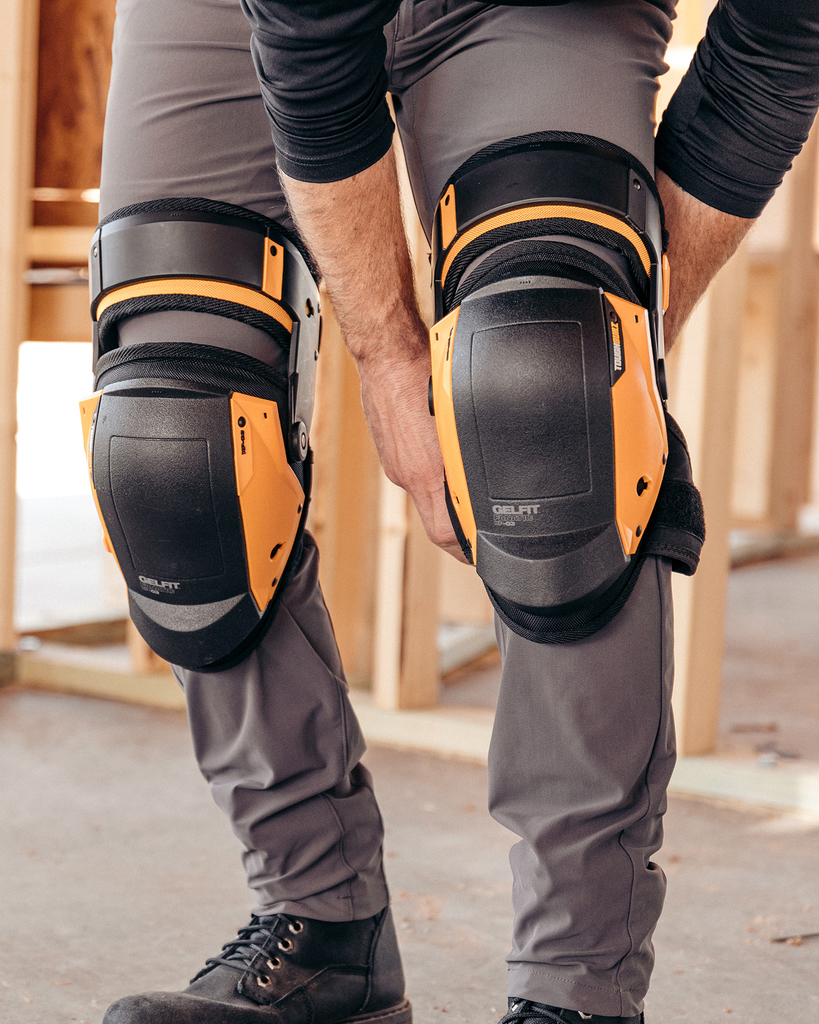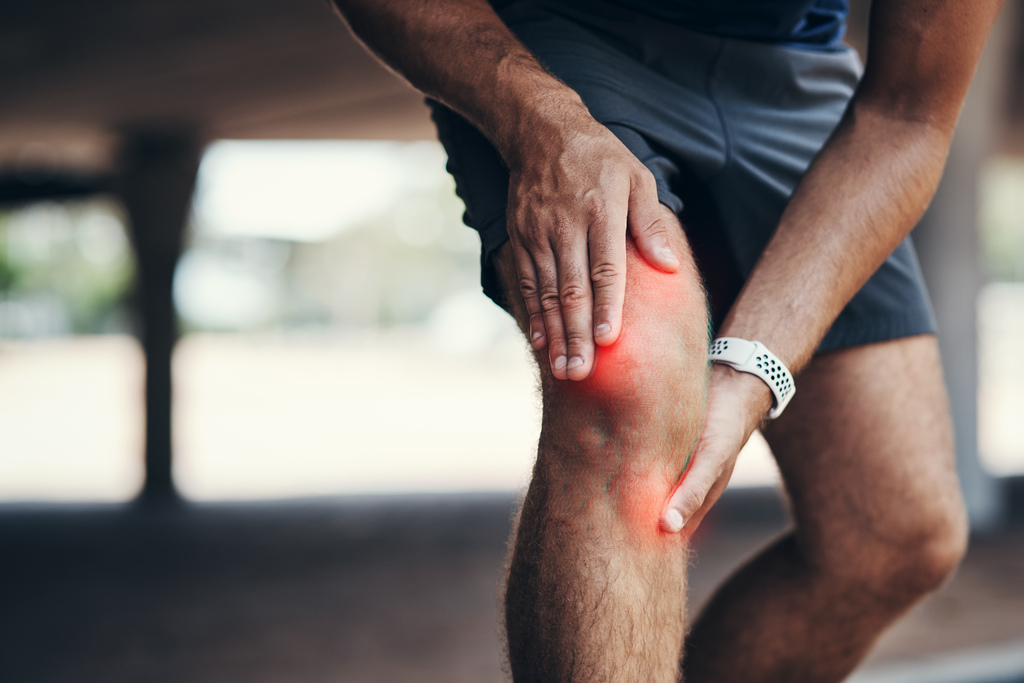
Kelly Rose
Editor

Kelly Rose
Editor
Throughout 2021, the Health and Safety Executive (HSE) found that close to half a million workers across the UK suffered from work-related musculoskeletal disorders (WRMSDs) with conditions affecting the lower limbs – including the knees – being the third most prevalent. As part of its #KneelSmartKneelSafe campaign, ToughBuilt has been discovering the human stories behind this statistic. Matt Handley explains more.
WHEN TOUGHBUILT launched our #KneelSmartKneelSafe campaign in August 2021, our aim was simple. To raise awareness of the need for adequate knee protection in the workplace and to encourage employers and individuals alike to treat knee pads with the same importance as other forms of PPE like hearing protection or safety glasses.
Obviously, as a market leading manufacturer of knee pads offering one of the widest range of CE and UKCA approved products available, we started the campaign with our eyes open.
Indeed, our entire motivation for the initiative wasn’t commercial gain but a sense of moral responsibility. As a business, we have a better understanding than most of the risks posed to the knees by work-related activities. We wanted to share this knowledge far and wide out of a duty of care.
Despite this, we’ve still been shocked by the accounts of people for whom our efforts have come too late. Individuals from many different professions have reached out to us via social media to express their support for the campaign and to share their stories in the hope that they can be used to safeguard others.
Lost workdays and careers
One of the people who contacted us was Adrian – an electrician based in South West England.
Having started out in his chosen profession at 16, Adrian, like most in the construction industry, has spent a considerable amount of time on his knees.
After ten years, the need for frequent kneeling began to take its toll and Adrian started suffering from knee pain. Worse was to come, when, after a prolonged period of kneeling to fit underfloor heating, he developed prepatellar bursitis.
This condition, which is often caused by repetitive kneeling, affects the prepatellar bursa - a fluid-filled sac, which sits in front of the kneecap. Its purpose is to provide cushioning and protection but if it is subjected to too much pressure, it produces more fluid to protect the knee and starts to swell, causing excruciating pain.
In Adrian’s case, the prepatellar bursa on his right leg swelled to the size of a cricket ball and he was forced to take three weeks off work. Since then, he has suffered from prepatellar bursitis repeatedly and he struggles to put pressure on his right knee, either at work or at home when playing with his children.
He has been told by doctors that there is nothing they can do for him. His advice to anyone embarking on a career where kneeling is commonplace is to start using knee protection as soon as possible. He believes that if you wait until your knees start to hurt, it’s already too late.
Adrian’s story is worrying and even more so because it’s not unique. We also heard from Charlotte who had to give up a job she loved and who is potentially facing knee replacement surgery at the age of just 40 due to work related activity.
A dream job becomes a nightmare
Charlotte began working as part of a marine engineering team in her early twenties. After a few years she started having difficulties with her knees which were exasperated by the demands of her job, where she was often required to kneel, unprotected, for extended periods of time.
By the age of 30, she had to undergo a meniscectomy which entails keyhole surgery to repair a damaged meniscus. The meniscus is a piece of cartilage that acts a cushion between your femur and tibia.
There are two menisci in each of your knees and they can become damaged or torn by activities that put pressure on or rotate the knee joint. This includes heavy lifting, deep squatting and kneeling.
The typical recovery period for a meniscectomy is between one and three months and Charlotte has now had five of these operations. She is currently arranging preoperative imaging to explore whether she should undergo a sixth meniscectomy or whether she might be better opting for a full knee replacement.
She has had to leave her job as she can no longer kneel normally. She also experiences sharp pain and her knees clicking and locking up. Charlotte did begin wearing knee pads halfway into her career but wishes she had started using them sooner.
She advocates the need to avoid kneeling at work unless absolutely necessary and where this is the case, to ensure you kneel properly – namely with adequate protection.
An uncomfortable fact
Our engagement with different professionals as part of our #KneelSmartKneelSafe campaign has revealed one of the biggest reasons people don’t wear knee pads isn’t just a lack of awareness; it’s also a lack of comfort.
Often, this discomfort can be worse than that from kneeling on a hard surface so it’s not surprising that some opt for what feels like the lesser of two evils.
Many individuals highlighted how knee pads can slip down the leg and become more like shinpads. The only way for them to avoid this is to tighten the straps so tightly it causes pain and cuts off their circulation.
Some people try to overcome this by opting for pads which can be inserted into the front of work trousers. The issue here however is that the chance of the pad being in the right position is very much height and build dependent. If your legs are slightly longer or shorter than the ‘average’ human being, your knees are unlikely to be fully protected.
Another common complaint was a lack of versatility meaning that knee pads can be awkward for that ‘quick’ job or when switching between different tasks or work environments
Our #KneelSmartKneelSafe campaigns aims to educate people on how knee pads, like other forms of PPE, have evolved.
As an example, our GelFit Fanatic Thigh Support Knee Pads have been purposely designed to offer all day kneeling comfort and to provide exceptional stability without compromising on side-to-side agility.
Their ergonomic gel and foam design embraces the natural shape of the knee and upper shin, maximising pressure distribution for an extremely comfortable fit. To keep the pads in place without cutting off the circulation, they also have thigh and calf straps which combine a buckle, elastic and EVA (an elastomeric polymer that is "rubber-like" in its softness and flexibility).
Similarly, our GelFit SnapShell Knee Pad System uses patented technology to offer unparalleled flexibility.
The SnapShell at the front of the pad is interchangeable and provides the freedom to quickly tailor knee pads to suit different tasks and work environments. Three types of SnapShell are available – non-marring, rocker (for use on rough terrain) and stablisers. The pads can also be used without any SnapShell.
To help us show UK industry how knee pads have evolved and to communicate the other important messages within our #KneelSmartKneelSafe campaign, we are employing various methods – including collaborating with social media influencers.
One of these influencers, Roger Bisby, who is a highly respected in the construction industry, has produced a video for his SkillBuilder YouTube channel in which speaks to a number of people affected by work-related knee conditions.
Our efforts under the #KneelSmartKneelSafe campaign remain tireless.
Why? Because if we can help just one person to avoid the agonising consequences endured by Adrian or Charlotte then our focus and determination will have been worthwhile.
Matt Handley is European head of marketing at ToughBuilt. For more information, visit https://toughbuilt.com/knee-pads


6671 S. Las Vegas Blvd. Building D
Suite 210 Las Vegas 89119
Nevada
United States
UNITED STATES
+1-800 288-4695